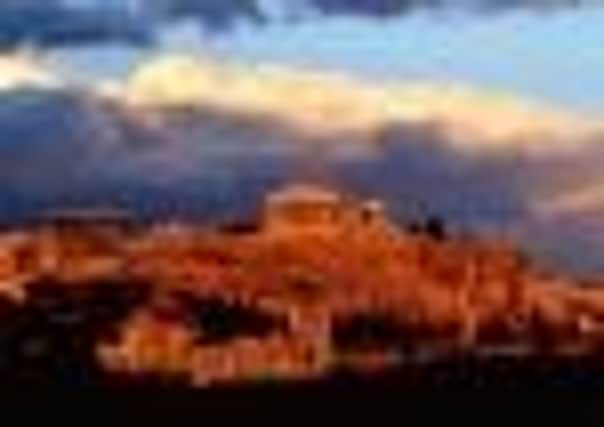TRAVEL: Spoiled for choice on a Greek odyssey


As I reclined in a hot spring pool on the island of Kos, I realised there is only one way to explore the Greek islands: catch the boat.
Preferably one as grand as Azamara Quest, a sleek 30,000-tonner with an elegant interior decor so strongly reminiscent of the 1930s that you expect to bump into Noel Coward on the promenade deck.
Advertisement
Hide AdAdvertisement
Hide AdThe two ships in the Azamara fleet both reflect the commitment of Larry Pimentel, the Azamara president, to ‘boatique cruising’- which means getting into small ports that the superliners cannot reach.


That was how, en route from Istanbul to Athens, we slipped into Kos, arranged cycle hire in the main town and headed for the cauldron-like springs of Thermes.
The springs were a welcome contrast to the tourist tat of the busier parts of the island, with simply a few rocks to change behind and a handful of thatched shacks selling hot and cold drinks for bathers who venture down a steep and rocky path to one of the island’s greatest charms.
The baths are also easily accessed from Kos by bus along a coastline with wonderful sea views if you don’t trust pedal power.
Advertisement
Hide AdAdvertisement
Hide AdA rather back-breaking piece of cycling took us on to Zia, where landmarks include an old watermill, and shops selling thyme-scented honey and hand-made soaps.


Kos blends stunning views with sites of historic significance. On one hilltop, the Asklepion archaeological site reveals the school of medicine where Hippocrates studied.
Casa Romana, Greece’s largest Roman villa, dating from the third century AD, features mosaics, frescoes and marble floors in its 37 rooms.
Amongst the Greek islands, however, the best views are often found back on board.
Advertisement
Hide AdAdvertisement
Hide AdOne night, we watched the sun set over Santorini’s black volcanic rock cliffs while we sipped cocktails and nibbled Greek hors d’oeuvres laden with juicy olives.


As we cast off, the shadows lengthened and the rays turned the rocks pink, while pinprick lights from tourists on the island’s volcano rim were clearly visible.
Created by volcanic eruption, Santorini has a natural beauty unspoiled by pockets of development. To reach Fira town, perched on dramatic cliff tops high above the compact port, you take a donkey ride up a narrow cobble-stoned path or step into a five-euro cable car.
From the peak, a partly paved clifftop path with picture-postcard views of the Aegean took us to the town of Oia, which appears like an incongruous snowfall of white-painted buildings against the black earth of the island.
Advertisement
Hide AdAdvertisement
Hide AdA quick lunch of chicken-filled bread in a local bakery was a relief after several hours walking. Truffles, cakes and succulent-looking banana bread also tempted the weary rambler, but we caught the bus back to Fira.
Beaches are another essential part of a Greek islands odyssey, the golden sands of Mykonos providing some of the best. Wandering around the palm-lined Mykonos town, with narrow streets of whitewashed houses and large blue-painted windows festooned with flowers is a charming experience, with the smell of Greek cooking wafting in the air.
Little Venice nearby is an area of tall Venetian-style houses built in water with waves breaking beneath them.
There was a more sombre feeling when Gallipoli’s Suvla Bay hove into view. This was the setting for massive British, New Zealand and Australian losses as the Allies tried to secure the Dardanelles from Turkey in 1915.
Advertisement
Hide AdAdvertisement
Hide AdSimple gravestones and memorials bear silent testimony to the bloodshed at that access point from the Mediterranean to Istanbul, the Black Sea and Asia.
Turkey has enjoyed an uneasy relationship with its Greek neighbours, a former colony in Ottoman times, and nowhere is that more apparent than at the Parthenon. The structure became the symbol of modern democracy from its perch high on a hill overlooking Athens, even though it was built using slaves.
Dedicated to the Greek god Athena, it was mortared in 1687 by the Venetians after Ottoman rulers used it to store gunpowder. Now under scaffolding, it remains an enduring symbol of Greece’s immense contribution to western philosophy.
Between their discoveries on shore, Azamara passengers drift from one magnificent meal to the next.
Advertisement
Hide AdAdvertisement
Hide AdThere were candle-lit dinners in corner tables with attentive waiters and, with elegant armchairs everywhere, you can rest at any time, rarely far in time or space from tasty morsels.
Somehow, the feeling of being pampered and spoiled never seemed to end. The red carpet and ropes and plants on the gangway suggested elegance while staff were ever-helpful. The guest whose umbrella perished in Gallipoli’s stiff breezes was swiftly handed another.
Each morning, at each new stop, local tourist information representatives came on board to detail local sights and to warn of money-making wheezes by local cabbies.
As the scenery changed, each day felt like the first day of our holiday. Some guests were Azamara veterans, happy to pay more for the privilege of being among fewer passengers (694 in all) enjoying personalised service.
Advertisement
Hide Ad